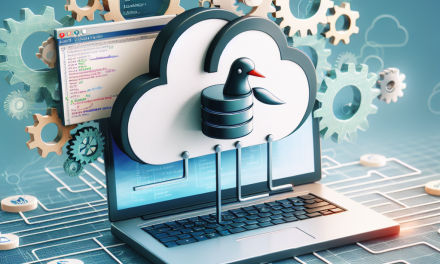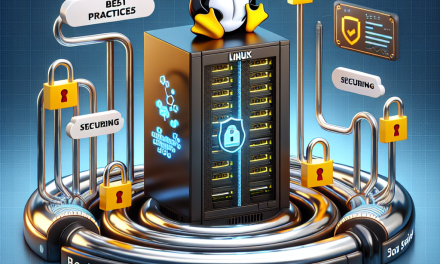In recent years, containerization has revolutionized the way applications are deployed and managed. Docker Swarm, Docker’s native clustering and orchestration tool, simplifies container management, but it also introduces new security considerations, particularly around sensitive data. One important feature of Docker Swarm is its secrets management, which allows you to store and manage sensitive information such as passwords, API keys, and TLS certificates securely. However, managing secrets securely requires a comprehensive approach to best practices. In this article, we’ll explore essential strategies for securing Docker Swarm secrets on Linux servers.
Understanding Docker Swarm Secrets
Docker Secrets provide a way to store sensitive data securely within the Docker Swarm environment. These secrets are encrypted in transit and at rest, and they are only accessible to services that are explicitly granted access. However, their security is not automatic; it relies on proper configuration and best practices.
Best Practices for Securing Docker Swarm Secrets
1. Limit Access to Secrets
Access control is crucial for managing secrets. Only grant access to secrets to the services that absolutely require them. Use service-level constraints to manage which services can read specific secrets. This minimizes the risk of exposure should an unauthorized service or user attempt to access sensitive data.
2. Use the Latest Docker Version
Always use the latest stable version of Docker. Each new release includes security patches, bug fixes, and improved features. Make it a part of your routine to stay updated with Docker releases and apply updates in a timely fashion.
3. Encrypt Secrets in Transit and at Rest
Docker Swarm automatically encrypts secrets at rest and in transit, but you should ensure that your TLS certificates are up to date and properly configured. Review your TLS settings and use strong cryptographic standards to enhance security against potential eavesdropping attacks.
4. Employ Role-Based Access Control (RBAC)
Implement Docker’s RBAC features to control who and what can access the Docker API. By limiting access to essential personnel and scripts, you can reduce the attack surface of your Docker environment.
5. Monitor and Audit Secret Usage
Establish logging and auditing practices to track secret usage across your Docker Swarm. Use tools like Docker’s built-in logging features or third-party solutions to monitor access patterns. This can help you identify unauthorized access attempts or potential misuse.
6. Regularly Rotate Secrets
Regularly update and rotate your secrets to mitigate the risks associated with long-lived secrets. Establish a secret rotation policy, making sure to update the secrets stored in Docker Swarm and notify services that use these secrets of the changes.
7. Isolate Swarm Nodes
Host your Swarm nodes in a secure and isolated network environment. Use firewalls, VPNs, and network segmentation to ensure that communication between nodes and external systems is protected. This reduces exposure to threats and secures the communication where secrets may be in transit.
8. Consider an External Secrets Provider
For enhanced security, consider integrating an external secrets management tool (e.g., HashiCorp Vault, AWS Secrets Manager). These tools can provide advanced features like automatic secret rotation, fine-grained access control, and detailed audit logs.
9. Review Container Security Best Practices
Ensure overall container security by following best practices such as:
- Using Minimal Base Images: Limit the size and packages in your base images to minimize vulnerabilities.
- Scanning Images for Vulnerabilities: Use tools like Trivy or Clair to identify vulnerabilities in images before deploying them.
- Running Containers as Non-Root: Always run containers with a non-root user whenever possible to limit potential impact from compromised containers.
10. Educate Your Team
Lastly, ensure that your operational team is well-versed in Docker Swarm security best practices. Provide training sessions that cover both technical aspects and security awareness. A well-informed team is your best defense against potential security breaches.
Conclusion
Securing Docker Swarm secrets is a multi-faceted approach that combines appropriate access controls, monitoring, regular updates, and security awareness. By implementing the best practices outlined above, you can significantly reduce the risk associated with managing sensitive data in a Docker Swarm environment. As technologies evolve, so too should our security postures; always be ready to adapt and improve your security practices in line with industry standards.





